Hello all,
Today I would like to talk about the costume of northwestern Zakarpattia. This part of Ukraine was under Hungarian domination for quite a while. The dialect spoken in this area is much closer to that of the Rusyny in Slovakia than to standard Ukrainian. This costume is worn in the area between Velykyj Bereznyj and Uzhok, and extends slightly into L'viw Oblast to include the village of Bitlia, and also into Poland, to include the village of Volosate [Wolosate], and the area around Kińczyk Bukowski. Here is an approximate map of this region.
As you can see, this area lies solidly within Boikiwshchyna as defined by the World Boiko council, and the costume is definitely of the Boiko type, but the people in this region self identify as "Lemko". Both Boiko and Lemko were originally exonyms, applied to these people by outsiders. The local people in Lemkovyna and Boikoland originally called themselves Rusyny or Verkhovyntsi, if they had any self-identity outside of their local village. Thus costume pieces from this area may be labelled 'Transcarpathian', or 'Lemko'.
The girl above is wearing a chemise from the village of Uzhok, although the apron is from another region further east.
The most distinctive feature of this costume is the chemise. Many regions in western Ukraine have a love of smocking, 'morshchanka', that is gathering the linen into 'tubes'. This is one of the areas which takes it to extremes. The entire front of the chemise is gathered, it may be almost down to the waist, although it is sometimes not as extensive. The back is gathered into the neck, but is not usually smocked.
Unlike English smocking, the gathering threads are left in place, and the result is not as elastic. A stabilizing stitch is done on the inside which resembles the simplest of the English smocking stitches. Floral embroidery is done on the upper sleeves and the cuffs. A band of ribbon or embroidery is placed on the collar. The collar and cuffs are both decorated with bought lace. The opening is along the seam connecting the sleeve to the shirt body on the side.
Originally the embroidery on the sleeves and around the neck was geometric. Here we see old photos and embroidery from Uzhok, Verkhovyna Bystra, and Liuta.
The skirt is also made of white linen, in typical Boiko style, gathered into the waistband with smocking, and for dress, embroidered on the lower part near the hem.
More recently, floral embroidery has replaced the geometric style in this region.
The embroidery usually complements that on the upper sleeves, which are not smocked. Both varieties of satin stitch and cross stitch. are used.
Embroidery is also done on the cuffs, and the lower sleeves are smock-gathered for some distance above them.
Often the front of the chemise is also embroidered, right over the gathers.
The apron is generally dark in color, with a band of floral embroidery and embroidered stripes and/or ribbons on both sides.
The sash was usually red, finger braided or made in sprang of one solid color, perhaps with pompoms at the ends.
As in other parts of western Ukraine, necklaces of seed beads were popular, as well as other kinds of necklaces.
These examples are from the village of Volosate, which is just over the border into Poland. Here we can also see an example of the outer garments.
Mens' costumes are rather simpler, consisting of shirt and wool pants, with vests and jackets as needed. Jackets are of the typical Transcarpathian types, and include regular wool jackets, and also ones with long fleece called hunia. The shirts are sometimes embroidered.
Here is a blog entry by someone who has family in this region and wrote about their visit there.
I took some of my material from this blog.
http://www.iabsi.com/gen/public/settlements/UK_Ljuta.htm
Thank you for reading, I hope that you have found this to be interesting and informative
Roman K.
Source Material:
V. Bilozub et al, 'Ukrajins'ke Narodne Mystetstvo - Vbrannia', Kyjiw [Kiev], 1961
Oksana Kosmina, 'Traditional Ukrainian Clothing', Kyjiw [Kiev], 2007






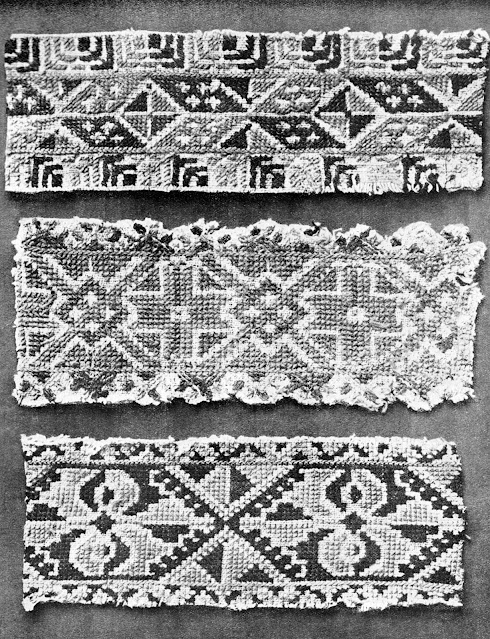












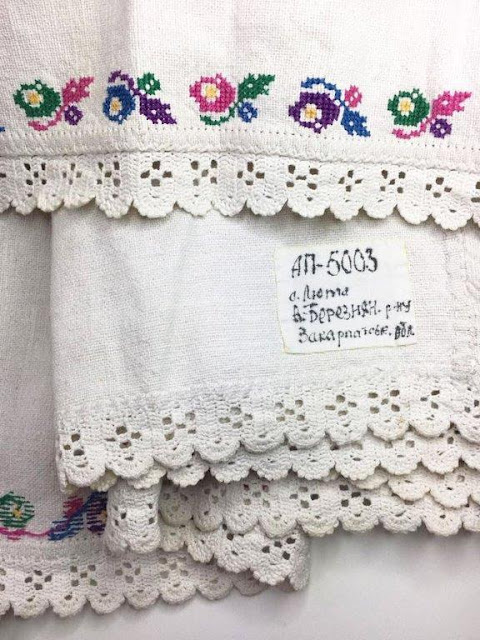






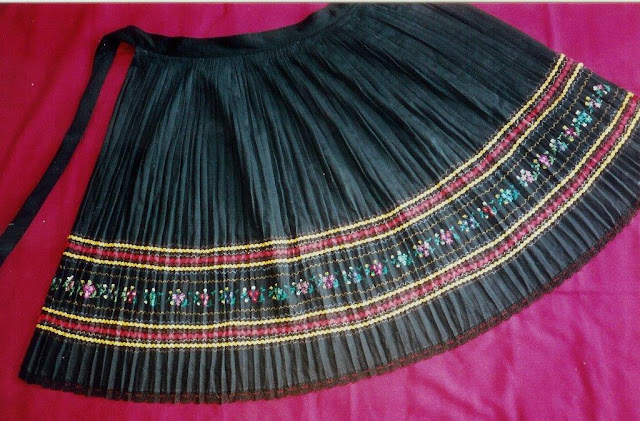













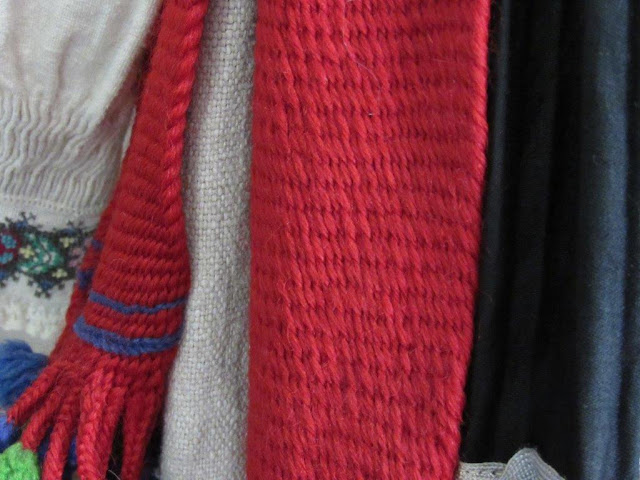




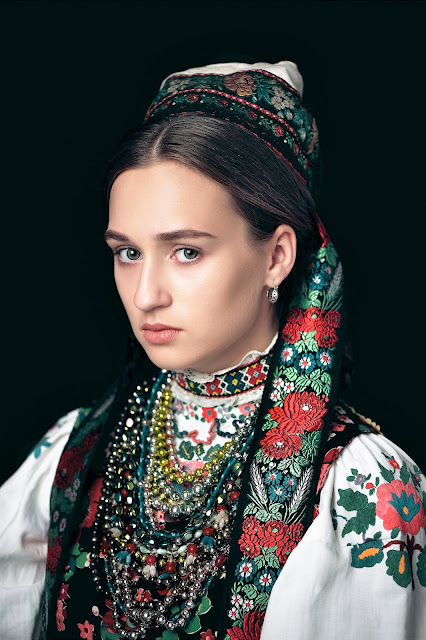


















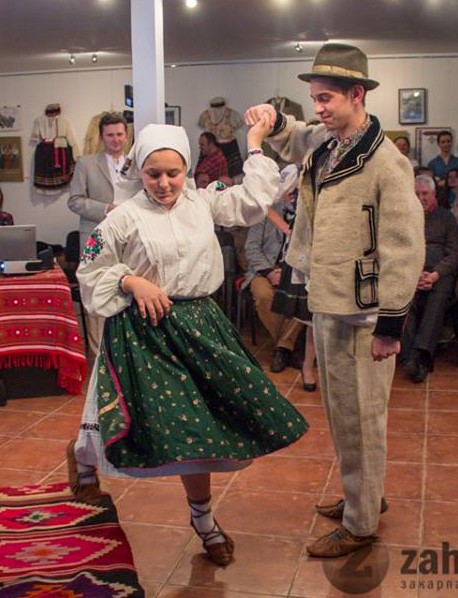












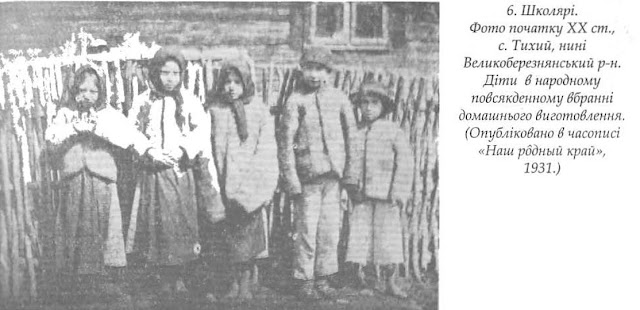





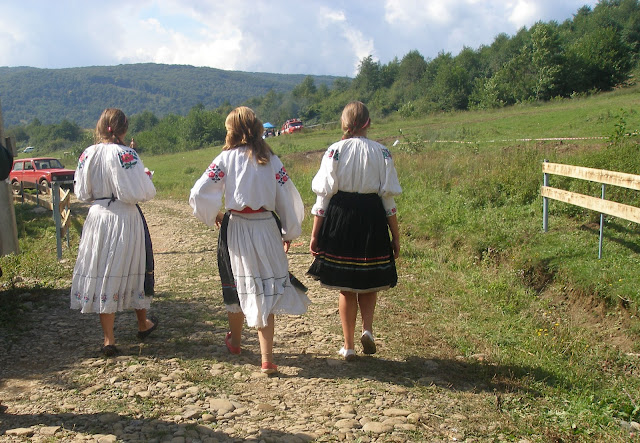















I like these chemises very much, they are very pretty and 'girly' with their flowers and lace and full sleeves...
ReplyDeleteNice dress with nice designs. I like them.
ReplyDeleteThreads